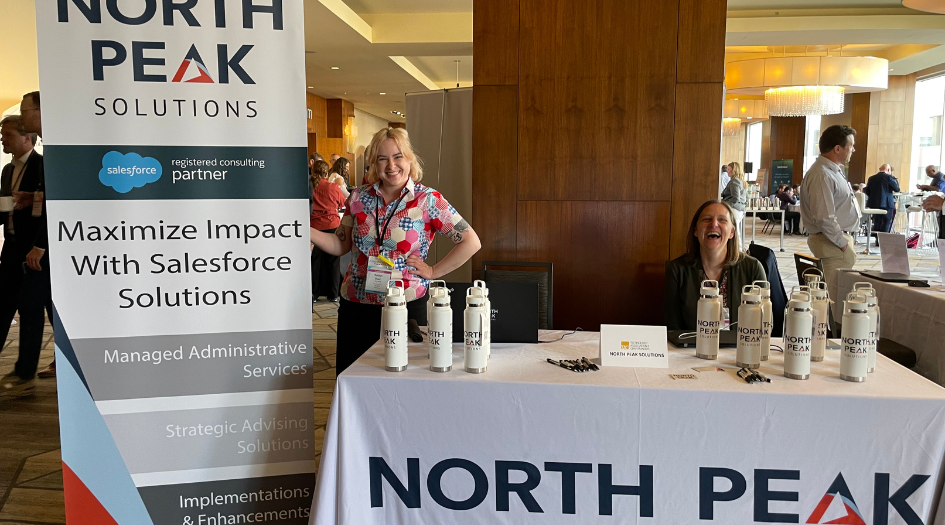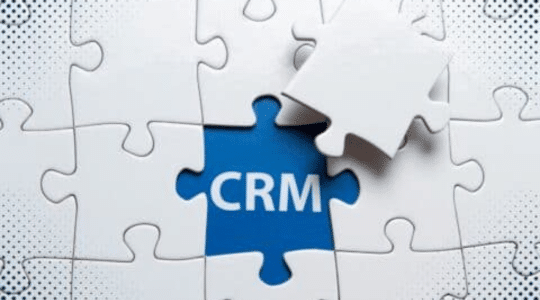
Change management and user adoption are essential for the success of a new CRM implementation. Unfortunately, those elements often get overlooked, and organizations then find themselves struggling to maintain their new database. In this blog post we’ll share five steps that organizations can take to ensure effective change management and user adoption with their new CRM platform.
1. User Adoption Starts with Understanding the Purpose of the CRM
First off, if your organization is struggling with user adoption it’s possible that users might not have a clear understanding about why you invested in a CRM, or what tasks the CRM platform is supposed to do. Some helpful questions that will get you closer to uncovering the why could include:
- How was a budget secured for the implementation and ongoing costs?
- What were the hopes and dreams communicated to the board and staff when embarking on this initiative?
- What was the CRM supposed to do for the organization, staff and external users?
For some people, learning new technology isn’t easy, but knowing why the CRM exists can motivate your staff and keep them on track. Plus, if there’s a clearly stated purpose for the CRM, when things break down (like the system no longer matches how your teams wants to work) knowing the why will make it easier to communicate about issues and challenges. For example, a staff member may wonder: “How can my team work in a streamlined way when there is no place in the system for the demographics we need to track?”
It’s also essential to understand the overall purpose of the CRM from a business perspective. A platform like Salesforce is incredibly flexible, and it requires a certain amount of investment upfront. Chances are, with a middling or failing CRM, it will be necessary to re-invest time and resources to bring the team back into unity with the system. Knowing why the CRM is important to the organization is the basis for securing funding to help get users (and the system) back on track.
When it comes to defining (or re-defining) the purpose of the CRM, engaging staff in the process is essential for change management. Ideally, staff are involved in building the “purpose” behind the initiative. This helps people feel more involved, and ensures they have time to process information and ask questions about how the CRM will support their work.
2. Proper Training is Essential for Good User Adoption
All CRM’s are different, and no matter your team members level of database expertise, training on the new platform is essential. Training isn’t static, occurring once and then marked as complete. Proper training includes a thoughtful, appropriate and personalized training plan that is delivered consistently to new team members and provides ongoing learning opportunities for more experienced staff to deepen their skills.
If you’re in a leadership role and have been tasked with developing a training plan, consider these questions as you get started:
- Have you confirmed it’s a workflow improvement to run job processes in the CRM? Does the CRM provide a reasonable interface and streamlined process that makes it easier for staff to do their job? Databases like Salesforce can be built to facilitate workflows that provide a good user interface that guides users through their job. On the other hand, a database can also be overbuilt and left with raw interfaces that require users to skip around the table structure to enter or update records. It’s also important to note that less user-friendly interfaces require more staff training and overall database knowledge. Before re-focusing on training, first ensure the CRM is purpose-built for how teams work.
- Do you know what staff should be doing in the CRM? If the answer is yes, that means your team knows their job, understands how their job processes are intertwined with the CRM, and knows what steps should be taken in the CRM on a daily, weekly and monthly basis. If this is the case, you are ready to design a training curriculum around these job functions.
- Is the training plan part of a comprehensive change management plan? Launching a CRM is a transformational initiative that can affect all levels of an organization. Because of this, there should be a gradual onramp towards the final result. This ensures that leaders can engage staff and bring them onboard, allows time for questions and clarity around how the CRM will support programs and staff, and ensures there’s ample time for implementation, testing and training. Training is an important part of a larger change management plan that steers teams to the bright future envisioned when the system was purchased.
3. Ensure There is Support Available for Users, Beyond Initial Training
Different technologies require different levels of support. A CRM is often the physical manifestation of the organization’s best practices and streamlined workflows, while also being used daily by largely non-technical staff. It’s important to ensure that someone is responsible for the overall health & well-being of the organization’s relationship with the CRM (i.e. – the purpose of the investment is being accomplished on an ongoing basis WHILE still having staff that will speak to you and not burn an effigy of the CRM out of tiki-umbrellas at the next happy hour).
Whomever is responsible for the CRM needs to make sure there are resources in place to provide ongoing support for the system. This generally includes a CRM Admin responsible for daily database maintenance, a Power User(s) to handle higher level training and support requests, and an Executive Stakeholder to lead in the areas of strategy, resourcing and accountability. CRM Admins are often in-house roles for mid-sized organizations, though there are clear right times for an outsourced Managed Service provider to fulfill the role of Salesforce Administrator.
4. Engaged Leadership Motivates Users, Supports Change Management
Is someone within your organization periodically reviewing the quality of data and assessing how staff are interacting with the system? Do staff get feedback when they aren’t meeting the expectations of their job function? If yes then there is engaged leadership in place that cares about the outcome. If not, then staff can likely choose for themselves how to use the system. This all too often leads to a wild west scenario where information is going in wherever/whenever, or not at all. Allow this to continue and it’s likely the database will soon be neither reliable nor up-to-date, resulting in staff losing trust in the CRM as a source of truth.
Our advice to executive teams when it comes to CRMs is to lead by example. Are executive team members telling folks they should be reporting out of Salesforce, but then aren’t logging in to get their reports and updates? If the database is “too hard” for leadership to use then it’s setting a precedent that staff can simply choose not to use it. On the other hand, if an executive director says – “Hey, I’m in the CRM and I’m not seeing your notes from last week’s call with XYZ Foundation. I’m meeting with a board member tonight and need that information right away” – that’s A LOT more motivating executive behavior that will get staff to use the system as designed, enter information regularly, and reach out with issues.
5. Ensure the CRM Technology Fits Organizational Needs
Sometimes, CRM user adoption isn’t really about the users. It could be that your team is raring to go, but they hit wall after wall trying to perform their job in a system that isn’t configured to meet their needs, or that doesn’t talk to other systems in a helpful way. If the technology isn’t right, or if it’s siloed into multiple programs that don’t talk to one another, then your efforts at user adoption and change management will encounter friction that makes everything more difficult. The goal here is a CRM that’s the right-fit for the team and processes being run through the system. Ideally, the database becomes a reliable source of truth, and staff experience a high level of ownership and engagement with it as an essential organizational tool.
So what to do if the CRM is clearly not configured for the work teams do? Well, the simple answer is you need to figure out how it should be configured, then make it happen. There’s no one size fits all approach, but we suggest these six steps as a solid starting point:
- Listen to users
- Assess the changes for complexity, cost, impact, etc.
- Prioritize the changes that are core to the future or will have the most impact
- Resource the work either in-house or to a consultant
- Test and gather feedback from users
- Launch and train as part of a larger change management effort
When a CRM is built to match how teams work and training is prioritized, good user adoption is much more likely. If staff feel their concerns around the CRM are addressed, they will be more engaged with the system and willing to participate in the process of CRM stewardship.
Next Steps
If you’re looking for a technology partner to guide your team forward, North Peak offers a number of services that can help:
- Implementation and Growth projects – If your team is newly adopting Salesforce, or an existing Salesforce is in need of a complete overhaul or expansion, our team has a proven process for Salesforce implementation and growth projects that includes strong user adoption and change management practices.
- Managed Administrative Services – If it makes sense to outsource Salesforce Administration and/or Advanced Support, we have experts ready to steward your initiatives on an ongoing basis.
- Strategic Governance Services – if your team is struggling to understand or implement CRM database best practices, we’re here to advise, train and support.
Contact us to learn more about our services or to get started on your CRM journey.
About North Peak
North Peak provides Salesforce-based services for nonprofits, foundations and the affordable housing sector who want to utilize the power of high-functioning CRM and GMS platforms. We achieve this through a holistic set of services, tailored to the needs of our clients.
Blog: Is Salesforce Nonprofit Cloud Right for Your Organization?
Understanding your organizational values and needs will help you make the right decision when it comes to Salesforce’s Nonprofit Cloud CRM.
Schedule a Free Consultation
If you’re considering implementing Salesforce or need help with Managed Administrative Services, or simply have questions about how to transform your organization’s data practices, we’d love to talk! Contact us for a free 30 minute call.



